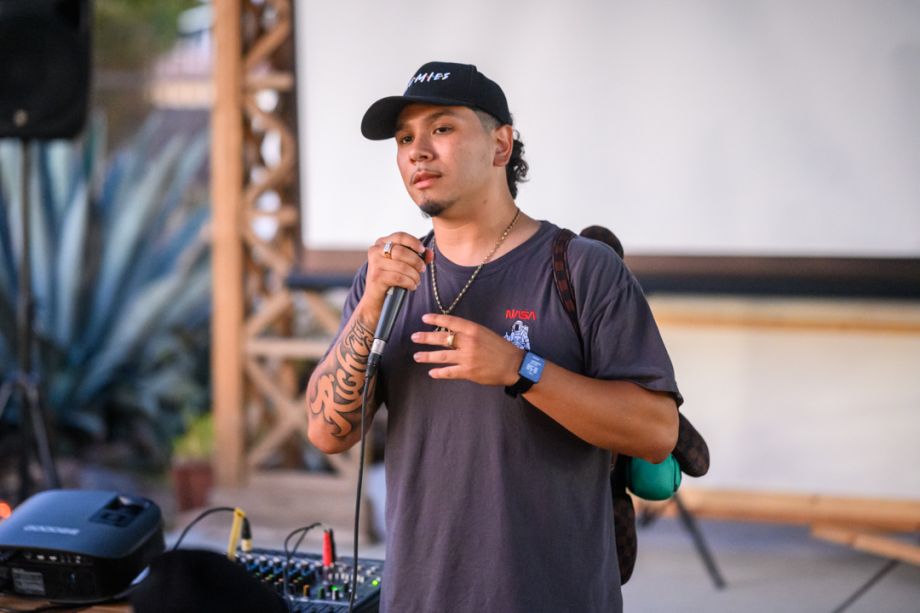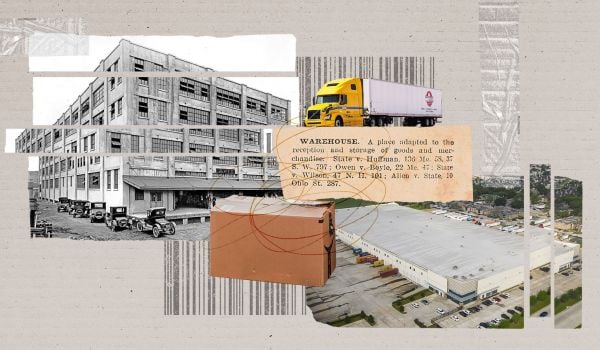This article originally appeared in Nexus Media News and was made possible by a grant from the Open Society Foundations.
On the afternoon of August 6, 2012, a thick black plume grew over Richmond, California, 10 miles northeast of San Francisco. As the air grew thick with smoke, residents instinctively knew the source: the Chevron oil refinery that for decades has loomed over the working-class community.
In the days that followed, 15,000 people in the area sought medical treatment for respiratory problems. Residents would later learn that a corroded pipe had leaked and exploded, sparking one of the area’s worst refinery disasters in memory. Chevron, which resumed full operations the following year, was eventually fined $2 million for the incident and pleaded no contest to six criminal charges, including failing to “correct deficiencies” in equipment. The company later paid the city $5 million to settle a lawsuit stemming from the fire. (When reached for comment, a spokesperson from Chevron wrote, in part, “Since 2012, we have taken a wide range of actions to continuously improve process safety performance. They added, “Our workforce of 3,000 people takes their role as good neighbors seriously and are continually working to ensure safe operation and environmental protection.”)
Richmond residents had lived through previous refinery explosions, and years of pollution had taken its toll: the prevalence of asthma in the majority Black, Hispanic and Asian town is nearly twice the state average. But the fire sparked a new, and lasting, wave of environmental activism.
“I think the 2012 fire had a big role in creating a generation of young people who are pissed and are looking at the status quo and saying, ‘Enough is enough,’” said Alfredo Angulo, who was 12 when the fire took place.
Progressives hold a majority of seats on the town’s city council and have taken on polluting industries, banning the export of coal from Richmond’s port and suing fossil fuel companies for their role in climate change.
Ten years after the disaster, Nexus Media News spoke with four community organizers from Richmond about the town’s history, their recollections of the disaster and their visions for a post-Chevron Richmond.

Robin Lopez. (Photo by Malcolm Wallace)
“We have always been a company town.”
Robin Lopez, PhD candidate at UC–Berkeley, 33: Richmond is a vibrant community of folks from all walks of life, many seeking refuge here from other countries. We have a large Latinx population as well as a lot of Southeast Asian folks. Unfortunately, Richmond has witnessed a huge exodus of our fellow Black community members. These are very vulnerable populations.
Alfredo Angulo, Richmond Listening Project, 22: We have always been a company town—Richmond wasn’t even established until after the Chevron refinery arrived in 1902. We’re a hub for industry, not only Chevron. The Pullman railroad company used to have shops here; the Santa Fe Railroad had a home here. Uranium was [handled] here during World War II.
Because of the legacies of redlining and residential segregation, Black and Brown communities face the bulk of the burden of the industry that made Richmond what it is today.

Katherine Ramos. (Photo by Denny Khamphanthong)
Lopez: We have the narrative that Chevron was here before the city was even incorporated. But even before the city was incorporated, there were people here. And even before the colonizers were here, the original stewards of the land were here: the Ohlone. These are not people of the past; these are our friends. We have community members who are part of the Ohlone community who are fighting for federal recognition.
Katherine Ramos, Richmond Our Power Coalition, 42: At least once a month, a loud alarm goes off that you can hear everywhere. It makes us feel like something’s gonna get dropped on us like a bomb. That’s Chevron’s alarm drill. It sends our nervous systems into this wild circumstance; it’s like they’re letting us know we’re still here.
On August 6, 2012
Lopez: I had just finished work at the Lawrence Berkeley National Laboratory. I remember taking the BART [Bay Area Rapid Transit] home and seeing a cloud of dark smoke above our house. My mom comes outside, and she’s looking up and we’re like what’s going on? And we turn on the news and we’re starting to see and hear things trickle in.
Brandy Khansouvong, Asian Pacific Environmental Network, 29: My mom and auntie don’t speak much English—their first language is Laotian. So it was hard for me to explain to them what was going on. I told my mom to close all the windows because Chevron’s burning.

Alfredo Angulo. (Courtesy photo)
Angulo: I remember going into my kitchen, whose window faces the refinery, and seeing the massive cloud of black smoke covering everything. It felt apocalyptic, seeing the whole sky turn black and seeing the neighbors outside trying to figure out what’s going on.
On the public health impact of the disaster
Khansouvong: My auntie had to seek medical care because she has a heart condition and asthma. She ended up in the hospital for, I think, eight days.
Angulo: We had just brought my grandmother over from Mexico, so that as she entered her 70s we could care for her. She developed asthma after that day—she had never in her life had asthma up until then. We had brought my grandmother over to keep her from harm’s way and the refinery did just that.
Ramos: Hundreds of people ended up in the hospital. Thousands of people ended up with long-term respiratory issues, which were compounded by other health problems related to pollution.
Richmond Our Power Coalition—a coalition of nine organizations working in service of moving us away from fossil fuels and decommissioning Chevron’s refinery—came out of that explosion. A lot of the community came together, feeling fed up after 120 years of harm.
“Enough is Enough”
Angulo: It’s difficult to differentiate what is a direct result of the 2012 fire and what is the result of just growing up here. One in four children who grow up in Richmond develops asthma at some point in their lives. My sister and I have had asthma our entire lives. I can’t even quantify how many hours I spent in the hospital as a kid with asthma complications.
Khansouvong: My parents came to Richmond to escape the war in Laos. They wanted to find a safe place to raise their kids, to live a better life.
When my mom first came here, they didn’t know there was a big oil refinery in our backyard. They found out because there was an explosion at the Chevron refinery in the 90s – I must have been a baby at that time. After the explosion, my dad developed asthma, and a few of my uncles developed respiratory issues. My auntie has asthma and heart conditions too. Sometimes she says the air is making it so she can’t breathe and it’s making her heart hurt.
A few people in my family have respiratory issues. The elderly people in my family, my mom and my auntie, can’t breathe and they’re always sick. They depend on me to take care of them and take them to the doctors. Now I have a 7½-year-old son. He’s in summer school near the refinery and I worry about him breathing in that air.
Lopez: There was even a study done by a team at UC Berkeley demonstrating that pollution from Chevron also impacts the indoor air quality of these residents’ households. There is no escape.
Angulo: Chevron provides about 25-26% of the city budget [through tax revenue]. We are toxically dependent on Chevron. So there’s a lot of fear in the community for the day that Chevron is no longer here.
That’s where we—the Richmond Listening Project—come into the picture, starting conversations with people about a future beyond Chevron.
Our goal with the project is to amplify the stories and the voices of the communities most harmed by fossil fuel operations here in Richmond. I was excited to discover, in these conversations, that everyday people do have a vision for a Richmond beyond Chevron. It’s a community where we have clean air, clean water, clean soil, and where our economy is regenerative and not based on the extraction of fossil fuels.

Katherine Ramos. (Photo by Denny Khamphanthong)
Ramos: The fire in 2012 was one of those ‘enough is enough’ moments. Several environmental justice organizations got together and formed a coalition.
We’ve created a mutual aid network; we’ve developed a cooperatively owned business incubator; there are cooperatively-owned structures for housing so people can afford to stay here.
The community converted what used to be a dumping ground into Unity Park. It’s where a lot of community events happen. Rich City Rides, [a nonprofit that promotes cycling as a green mode of transportation], starts our Self-Care Sunday rides there.
In North Richmond, you have Urban Tilth, which produces hundreds of pounds of fresh, organic hyperlocal grown food that goes out to the community, which doesn’t normally have access to those types of foods.
Folks who have lived here wanted more than just to fight this refinery, but to create the future that they’ve envisioned.

Brandy Khansouvong. (Photo courtesy APEN)
Khansouvong: I started going to APEN [Asian Pacific Environmental Network] meetings with my mom. My mom always says that she escaped war to find a better life, but the pollution here brings its own challenges. It has meant a lot to me to be a part of the network. We’ve been able to share our experiences with other [frontline] communities. Sometimes we cry—it can get emotional.
Angulo: In the wake of the fire, the Richmond Progressive Alliance came together to take political power away from Chevron and put this decision-making power back into the hands of the community. We have a progressive majority on the city council and we have been able to pass a lot of environmental policies. We banned the transportation of coal in Richmond and passed a progressive tax on income from corporations.
I think the 2012 fire had a big role in creating a generation of young people who are pissed and are looking at the status quo and saying, “Enough is enough.” We are a generation that has never lived in a world without the climate crisis, and we’re starting to see that we don’t have time for inaction.
Nexus Media News is an editorially independent, nonprofit news service covering climate change. Follow them at @NexusMediaNews.
Danielle Renwick is editor of Nexus Media News, where she oversees news features, journalism projects, and media partnerships. Prior to joining Nexus Media News, Danielle was an editor at the Guardian US, where she was part of an award-winning investigation into U.S. healthcare workers lost to Covid-19. She has reported from Brazil, Argentina, Cuba, and her home state of Wisconsin, with bylines appearing in The New York Times, NPR, and Marketplace, among other outlets. Danielle has a master’s degree from Columbia University’s School of International and Public Affairs and a bachelor’s degree in journalism from New York University. She speaks Spanish and Portuguese, and as a new mom, enjoys the occasional nap.
















